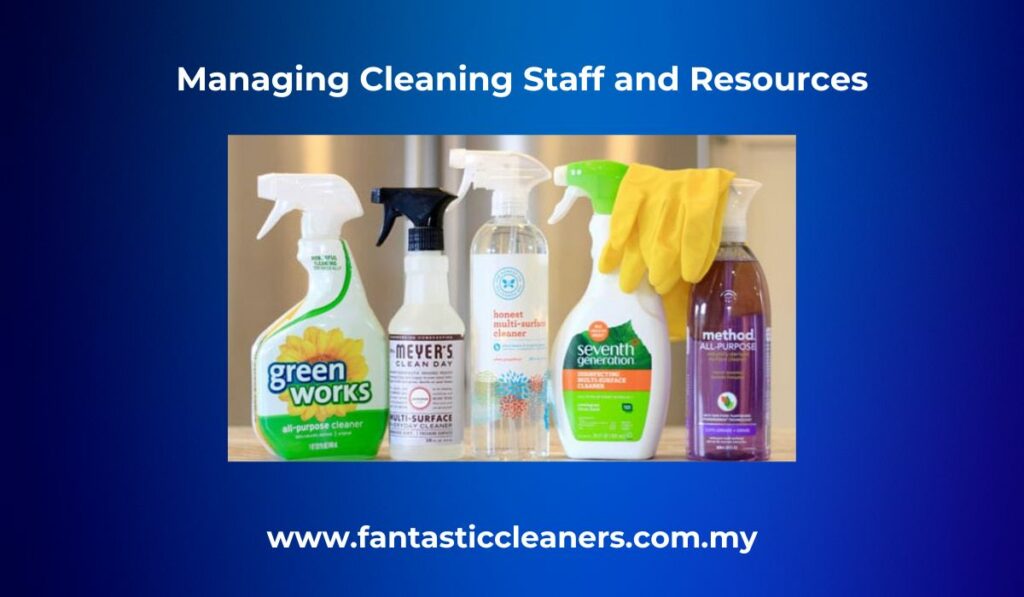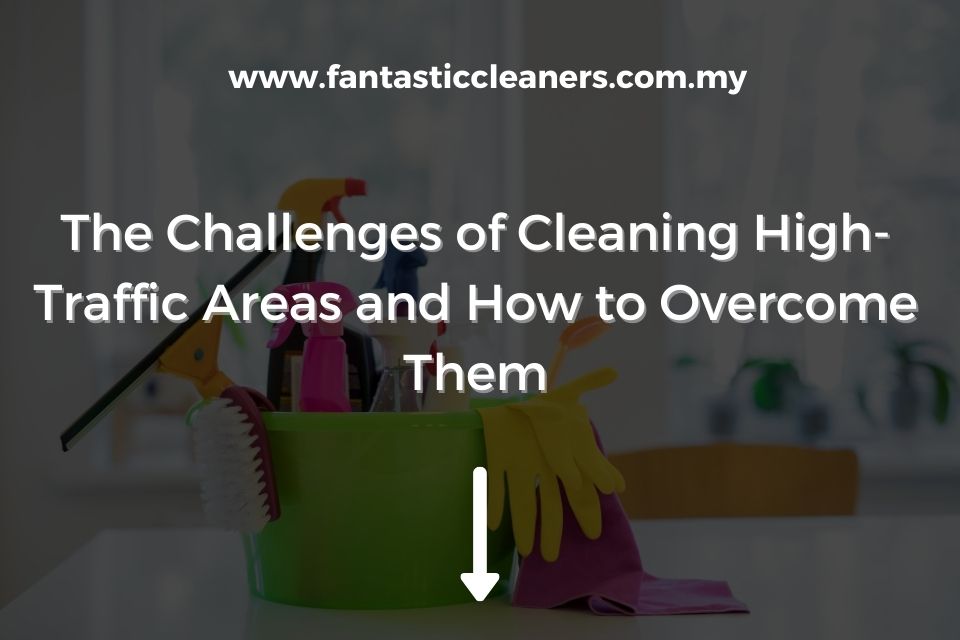Are you responsible for maintaining cleanliness in areas with a lot of foot traffic? It’s a challenging task indeed! Rest assured, you’re not alone in facing this difficulty. Check out this blog post for insights. It covers widespread challenges and offers strategies to address them.
Table of Contents
Time Constraints and Operational Interruptions
Time constraints and operational interruptions are a problem for high-traffic areas. More foot traffic means less time for cleaning services. But there are solutions! Automated cleaning equipment can help maintain hygiene standards while allowing operations to continue. Custom cleaning schedules can reduce interruption and keep up with cleanliness. Managing a cleaning company is like herding cats–but with more cleaning supplies!
Managing Cleaning Staff and Resources

Managing a cleaning company is tricky. High-traffic areas present special challenges that must be conquered to keep customers and employees clean.
One challenge is staff productivity when doing monotonous tasks. Schedules can be crafted to rotate staff among different duties, keeping them engaged and intrigued. Plus, clear guidance on expectations and procedures can reduce goof-ups and procrastination.
Resources also need attention. In high-traffic places, restocking supplies like paper towels or soap dispensers must be done more often to prevent mid-day shortages. Investing in durable equipment, such as floor scrubbers, can make cleaning more efficient in the long run.
Another problem in high-traffic spots is dirt and debris build-up during business hours. To tackle this, special techniques like dry mopping or vacuuming can remove mess without causing disruption or harm to customers or employees.
In conclusion, managing a cleaning company requires proactivity and problem-solving. By focusing on staff morale, resource supply, and suitable cleaning methods for high-traffic areas, cleanliness is maintained without interrupting business operations. It’s like playing Jenga with germs instead of blocks!
Cleaning Difficulties in Complex Structures
Cleaning high-traffic areas can be tough. From stores, offices, hospitals to schools and universities, these areas are hectic and have lots of people. To maintain cleanliness, a plan must be put in place that is suitable for the area.
Establishing a routine cleaning schedule is essential. Vacuum cleaners and floor scrubbers can help clean large areas quickly. Public bathrooms, however, need constant attention due to the continuous flow of people. High-quality disinfectants and avoiding touching surfaces even with gloves are key.
Hard-to-reach spots like overhead vents or tall shelves pose a challenge. Extension poles and professional cleaners with special tools can help here. Consistency is key in cleaning – aiming for a ‘spotty’ reputation isn’t recommended!
Ensuring Consistent Cleaning Standards
Achieving consistent cleaning standards in high-traffic areas can be a challenge. But, with the right approach, it’s possible! Firstly, it’s essential to understand which areas need more attention and allocate resources accordingly. Secondly, using suitable equipment and cleaning agents will save time and ensure complete cleaning. Moreover, regular staff training and monitoring are key for maintaining quality.
Safety can’t be neglected when it comes to cleaning. Cleaners must wear protective gear while handling chemicals. Plus, equipment must be routinely maintained to avoid accidents.
In conclusion, consistent cleaning standards require detailed planning, ample resources, suitable equipment, and regular staff training and monitoring. By following these tips, we can guarantee consistently high-quality cleanliness that benefits everyone. And, remember: if a situation looks hazardous, it probably is.
Safety and Hazardous Conditions
High-traffic areas are a hub for dirt, grime, and germs. But the process of cleaning these spaces is a big challenge due to safety and hazardous conditions. In commercial places like malls and hospitals, contaminated surfaces can cause diseases if not cleaned properly. Handling toxic waste also brings danger. Yet, cleaning companies can overcome safety issues by creating a checklist of safety protocols before starting.
To keep people safe while cleaning high-traffic areas, it’s important to have personal protective equipment (PPE). Team briefings on occupational hazards and safety measures should be mandatory. Using green-cleaning products also helps to reduce exposure to dangerous chemicals in traditional disinfectants.
More risks come from daily wear-and-tear on cleaning equipment, like mops and brooms. So it’s important to have regular check-ups on machinery used during the process.
In conclusion, safety is essential when it comes to high-traffic area cleaning. Facilities managers and professional cleaners must work together to implement necessary hygiene practices. This way, we can reduce accidents related to occupational hazards in these places.
Cleaning up after a wild party is like attempting a Rubik’s cube blindfolded – a hard puzzle that’ll leave you spinning!
Adapting to Seasonal and Event-Related Changes
It’s key to modify your cleaning approaches depending on the season and events. Some examples are: sweat, sand, sun lotion residues in summer; salt stains from snowfall and slush in winter; litter from gift wrapping and decorations during the holiday season. To tackle these challenges, during hot weather, air fresheners are great for removing germs and keeping the space smelling fresh. In winter, regular mopping is a must to prevent icy patches. And for holidays, regular vacuuming keeps the area clean from bits of tinsel or cobwebs.
Cleaning high-traffic areas is not easy, but with the right strategies and tactics, you can make it happen!
Conclusion
High-traffic areas are tough for cleaning professionals. But the right techniques and tools can help conquer these challenges. Understanding deep cleaning and disinfection is key. Also, using advanced equipment like backpack vacuums and robotic cleaners. Developing a system that focuses on removing dirt and debris from high-touch surfaces is the answer. This gets satisfactory results while keeping infection spread low. Therefore, following strict hygienic protocols is essential for maintaining clean, healthy environments.
Frequently Asked Questions
1. What are the biggest challenges when cleaning high-traffic areas?
A: Some of the biggest challenges when cleaning high-traffic areas include handling large amounts of dirt and debris, keeping up with frequent cleanings, and preventing the spread of germs and bacteria.
2. How often should high-traffic areas be cleaned?
A: It depends on the specific area and the amount of foot traffic it receives, but high-traffic areas should generally be cleaned daily or at least several times a week to maintain cleanliness and prevent the buildup of dirt and germs.
3. What cleaning techniques and equipment are best for high-traffic areas?
A: High-traffic areas may require more frequent and thorough cleaning than other areas. Appropriate techniques and equipment may include using a HEPA filter vacuum to capture fine dust particles, mopping floors with microfiber mops and using disinfectants to kill germs and bacteria.
4. What safety precautions should be taken when cleaning high-traffic areas?
A: In high-traffic areas, there may be an increased risk of slip and fall accidents. To prevent this, all wet surfaces should be clearly marked with signs, products should be properly labeled and stored, and employees should be trained to follow safety procedures and wear appropriate personal protective equipment.
5. How can I keep high-traffic areas clean and organized throughout the day?
A: In high-traffic areas, trash cans should be emptied frequently, spills should be cleaned up immediately, and designated areas for coats, bags, and other items should be provided to prevent clutter and keep walkways clear.
6. What are some common mistakes made when cleaning high-traffic areas and how can they be avoided?
A: Common mistakes when cleaning high-traffic areas include not using enough cleaning solution, not thoroughly cleaning hard-to-reach areas, and not properly sanitizing high-touch surfaces like door handles and light switches. These mistakes can be avoided by following proper cleaning procedures, using appropriate cleaning products and equipment, and training employees on best practices.

